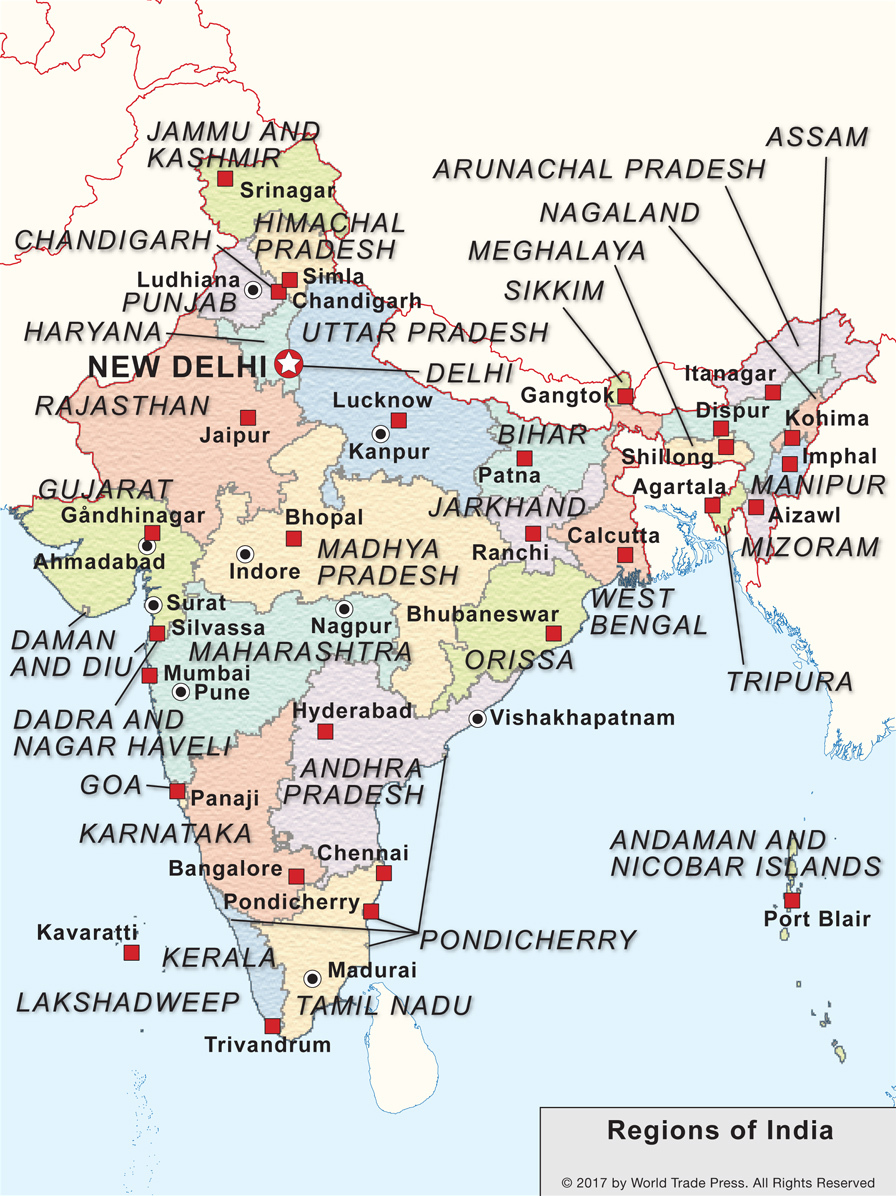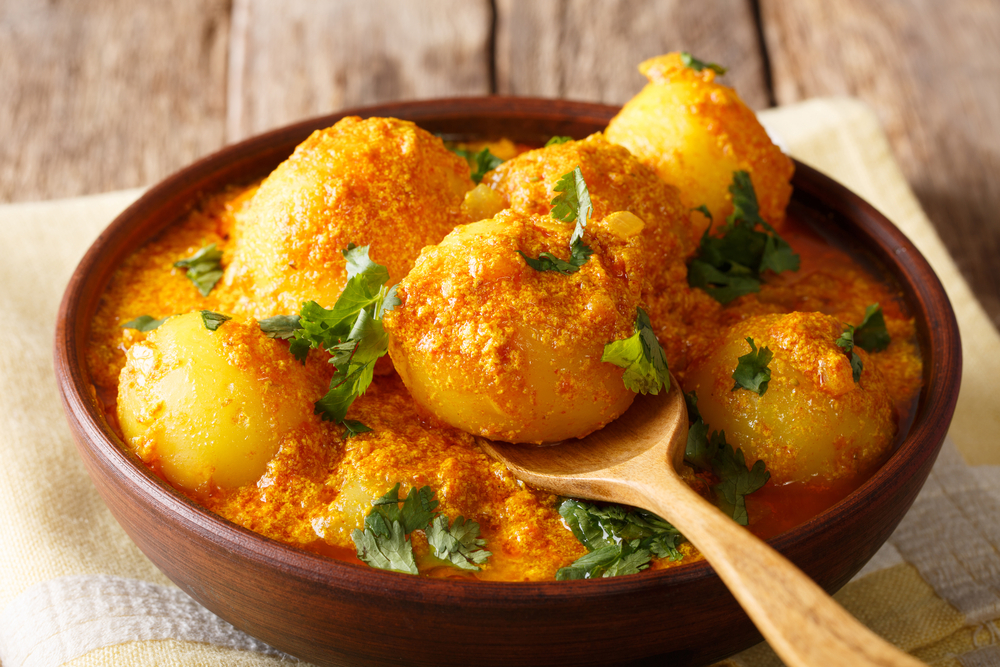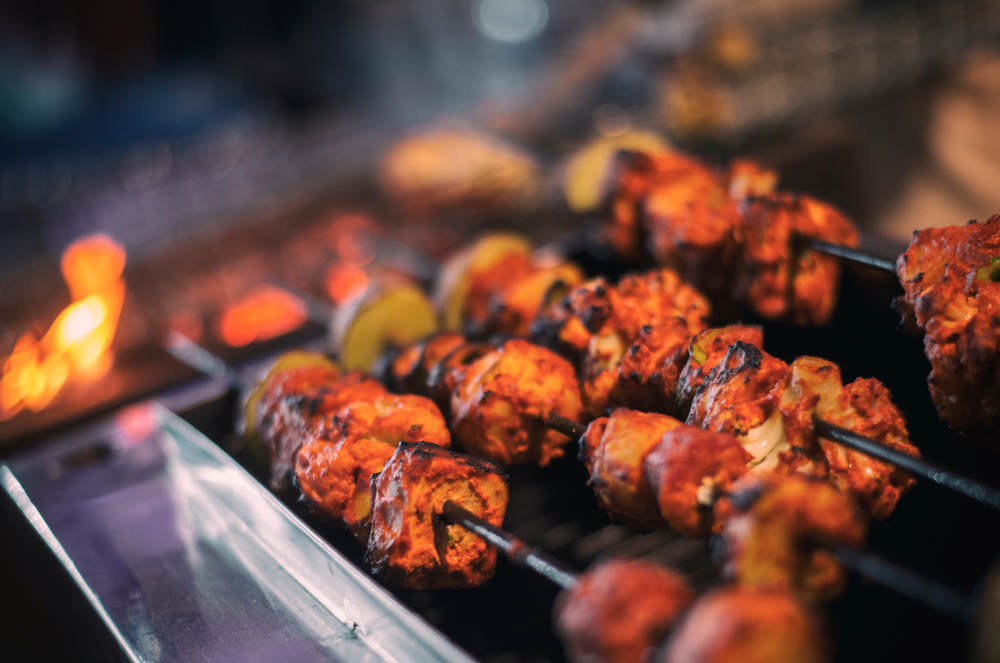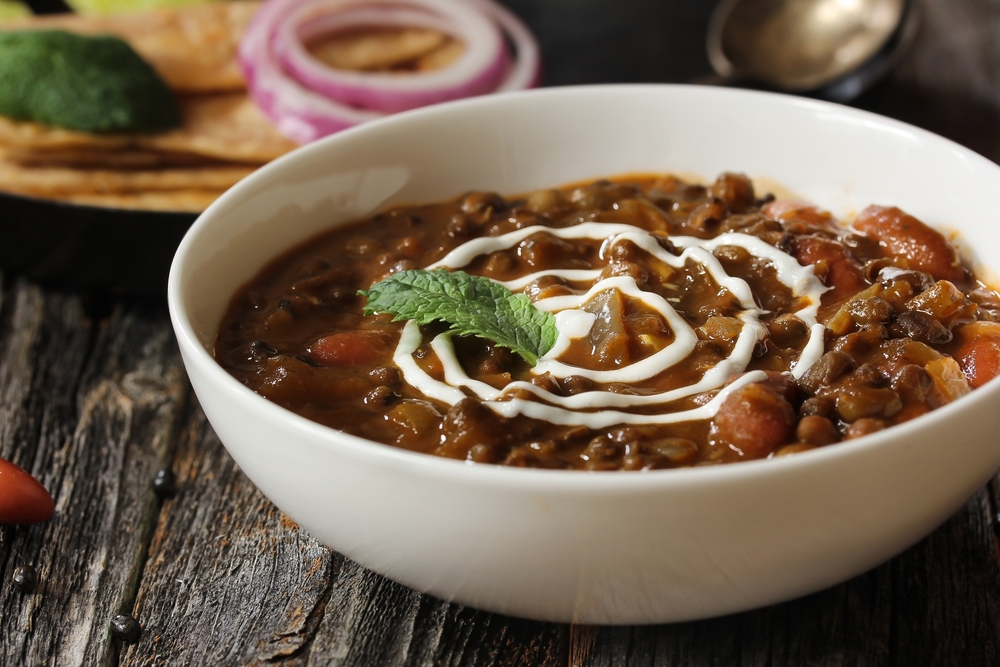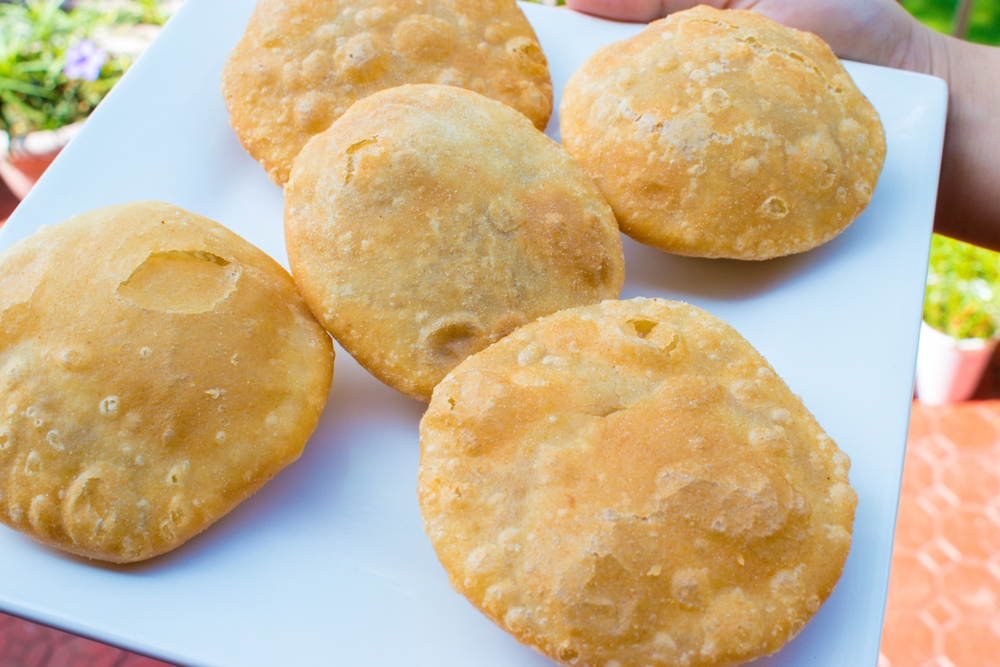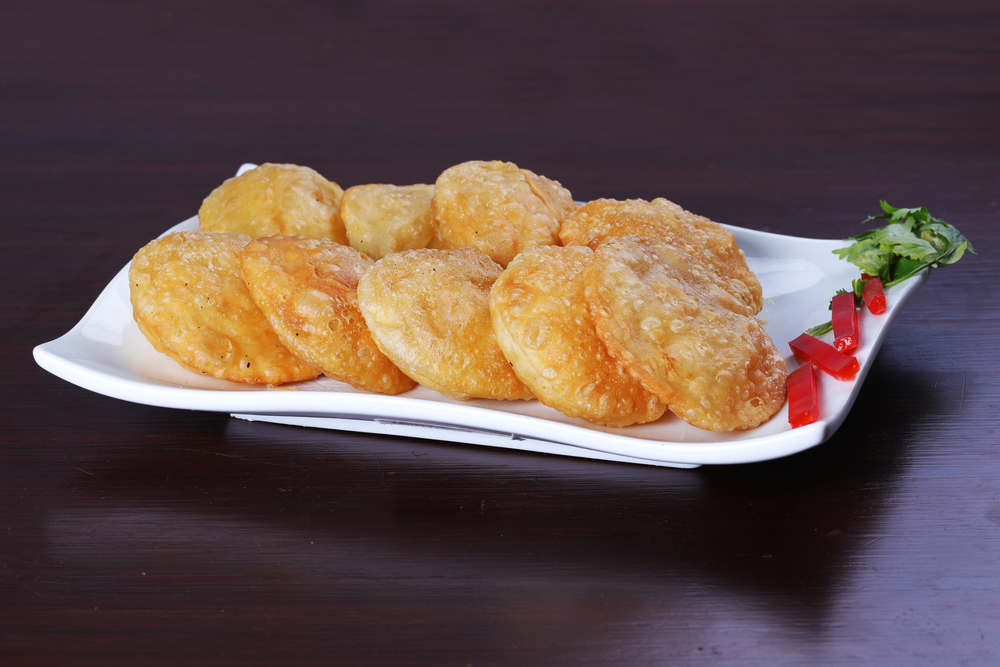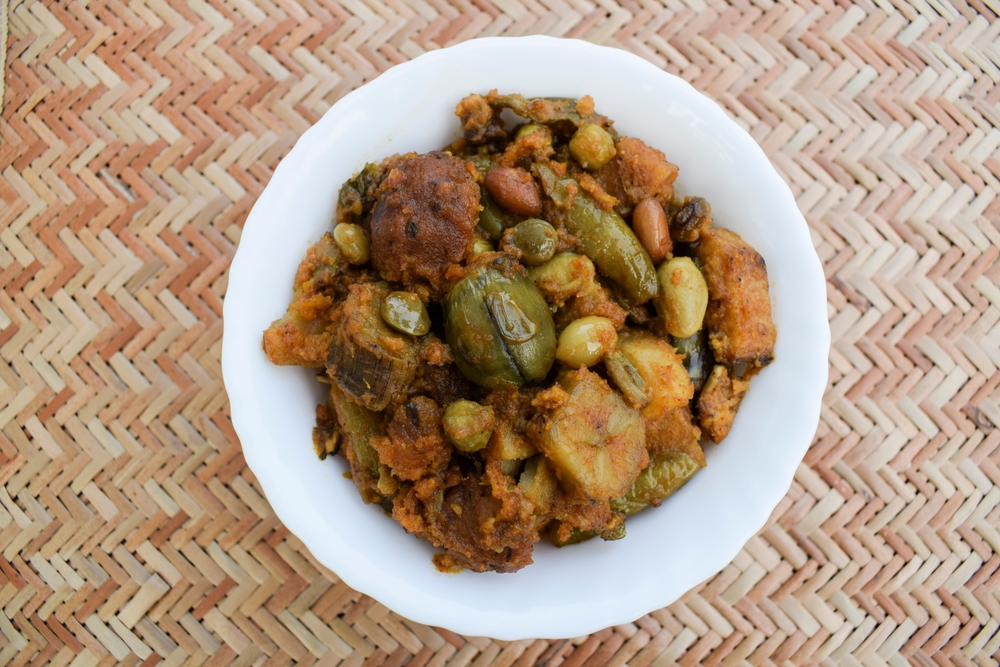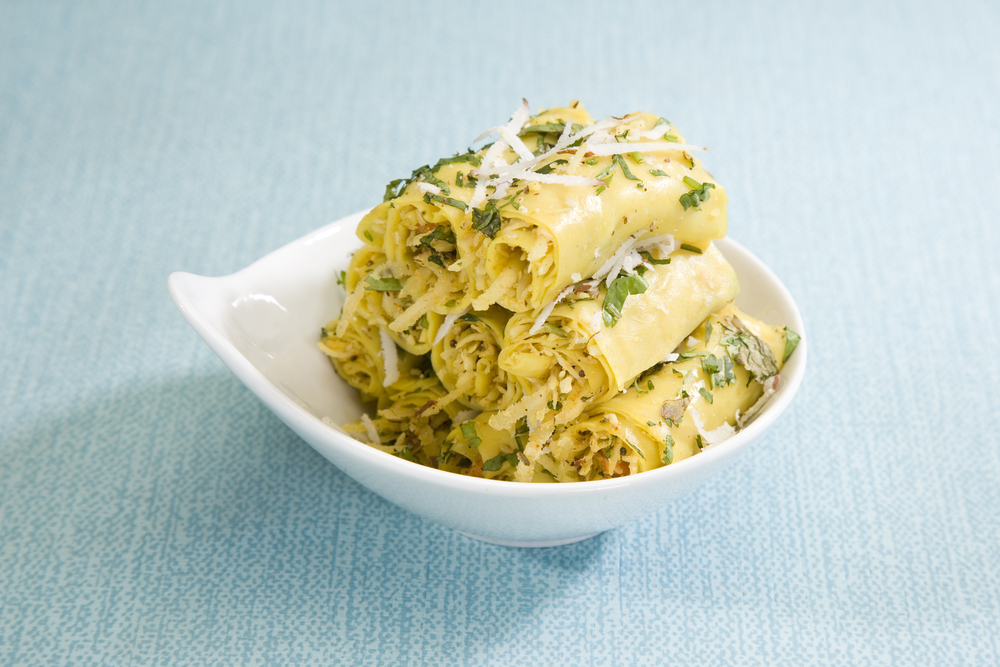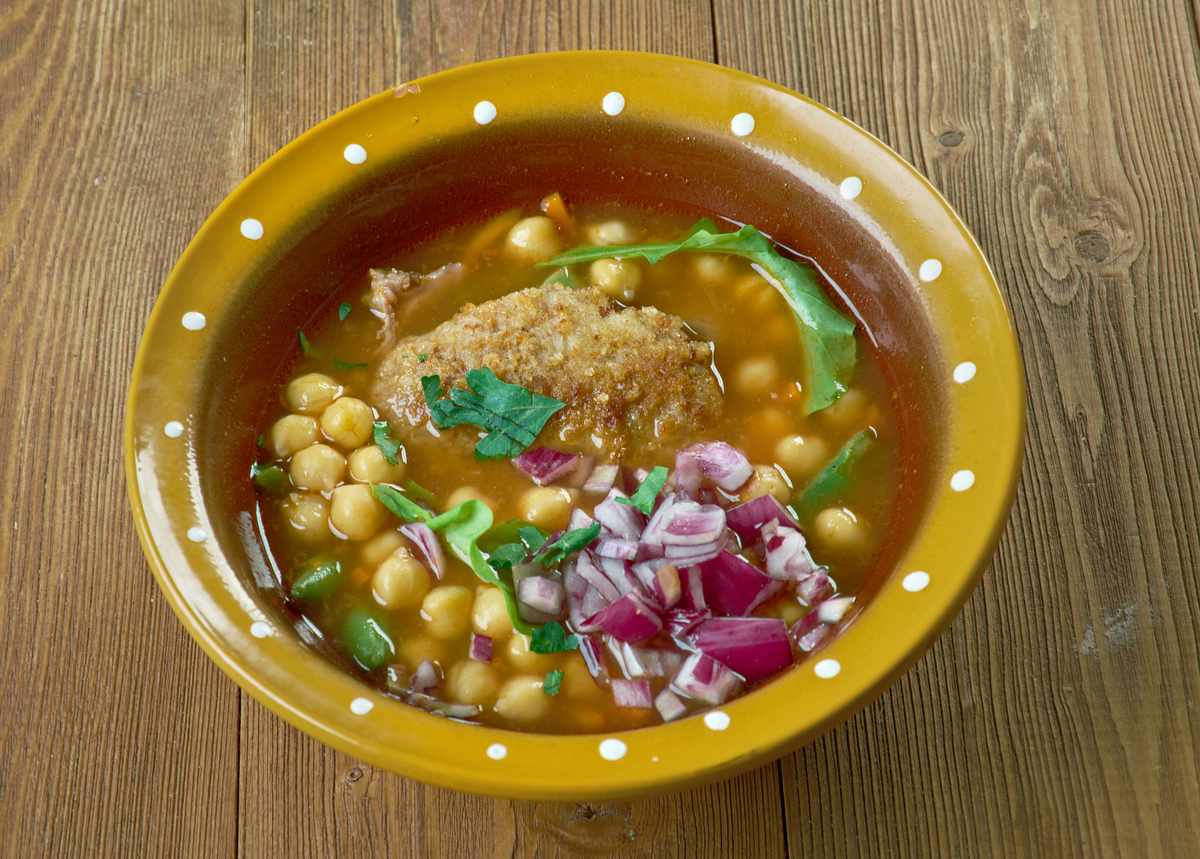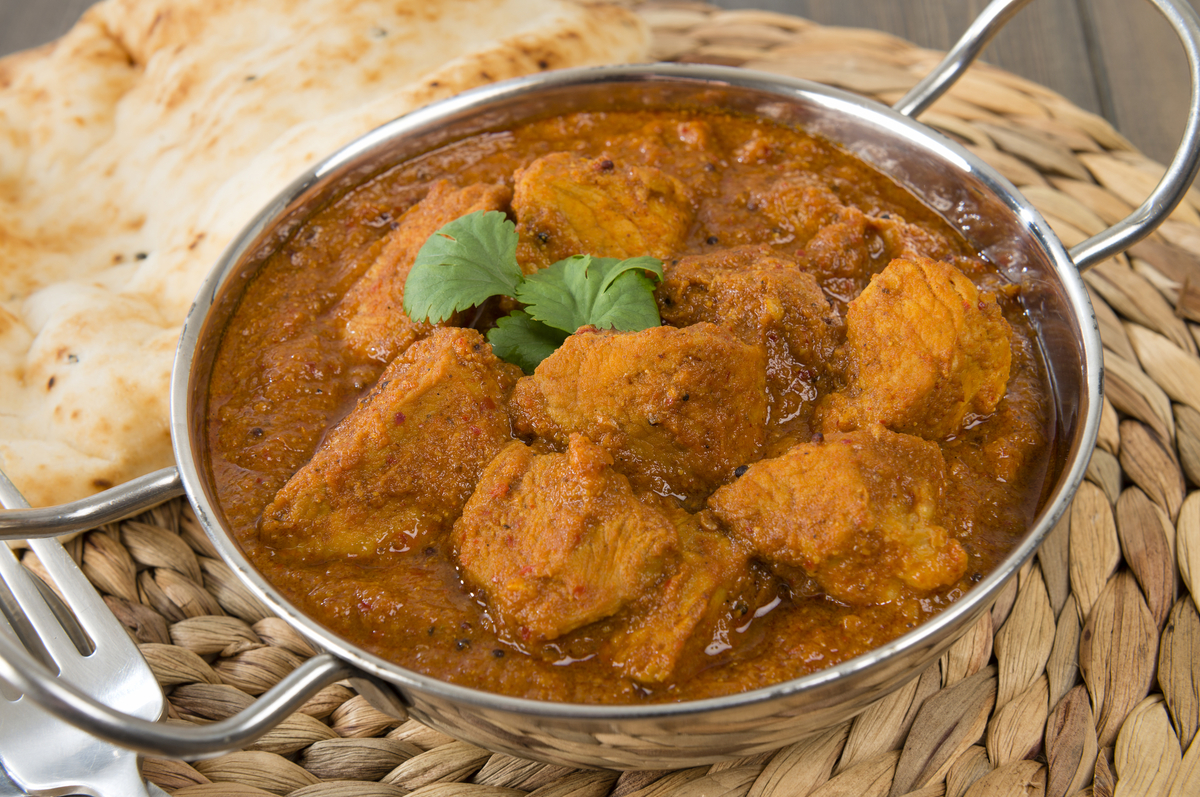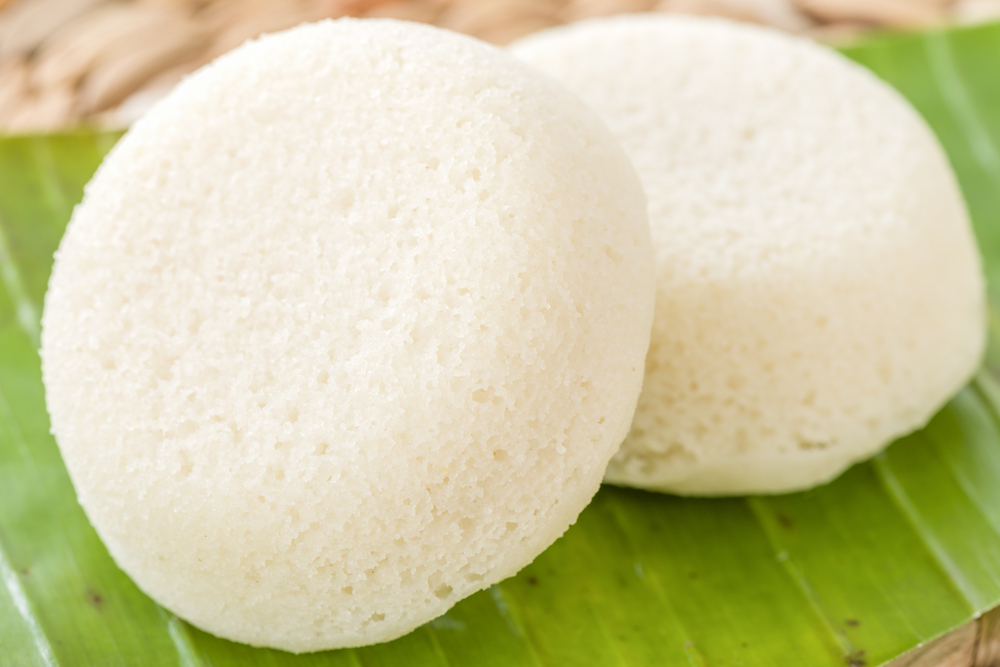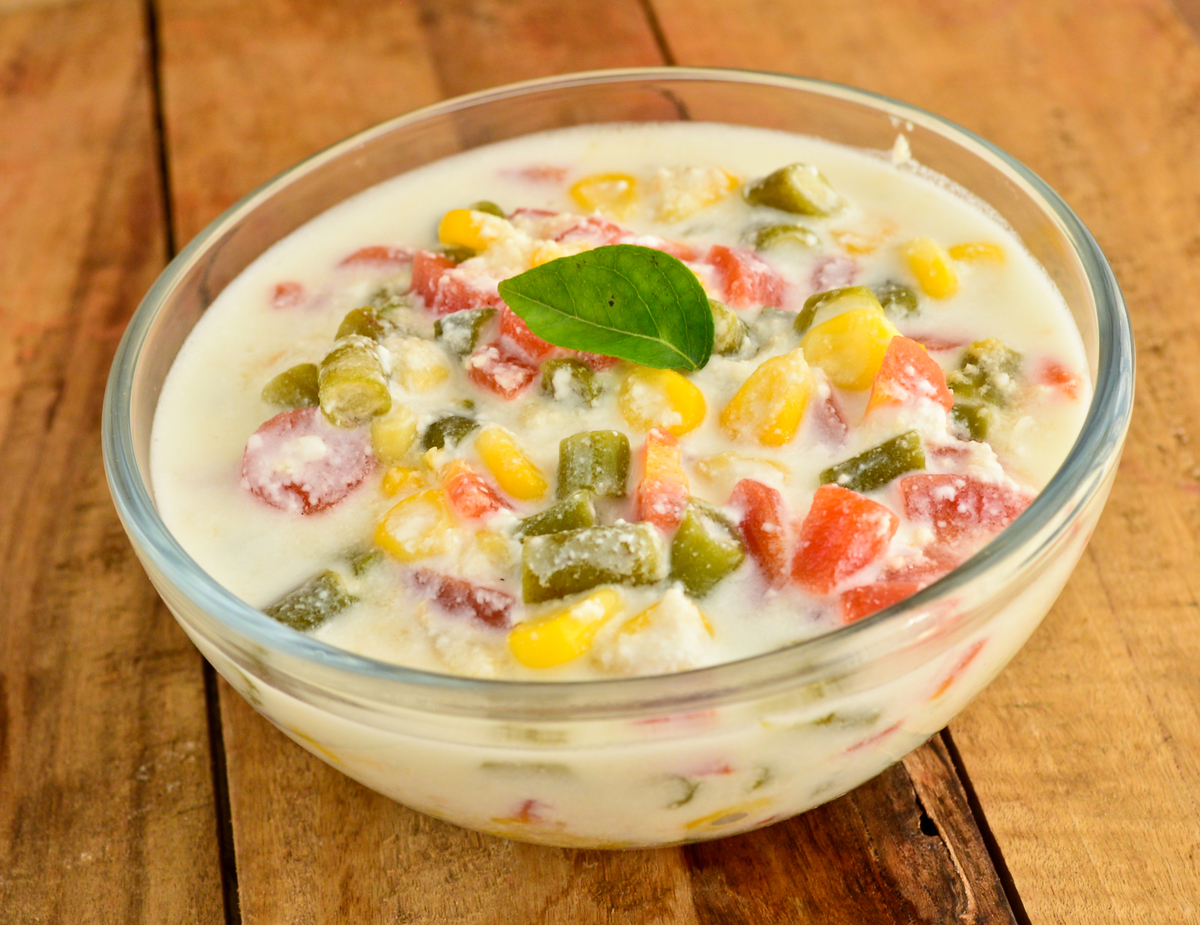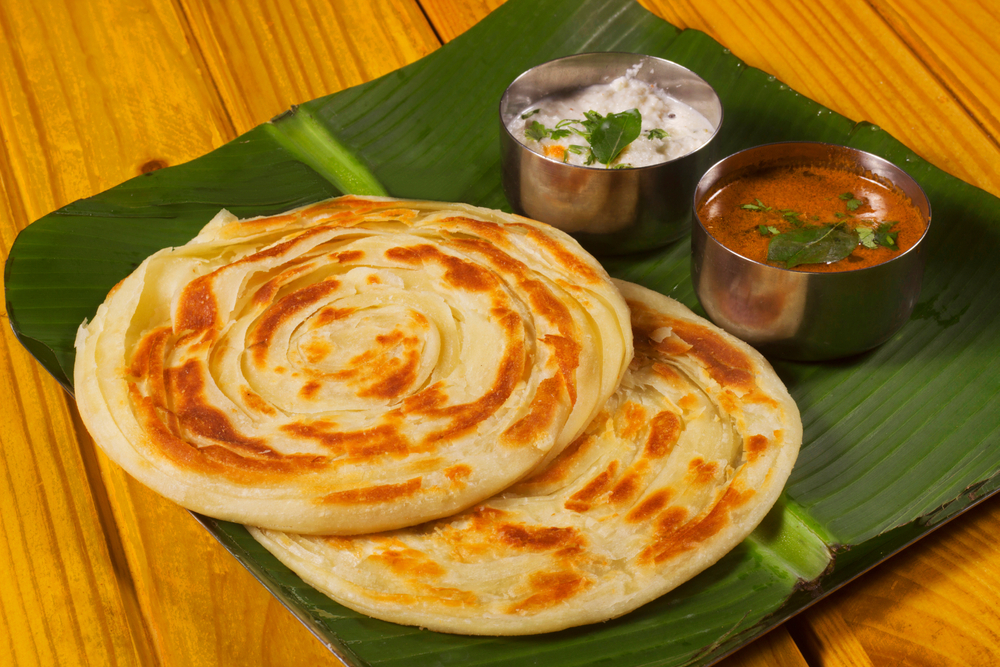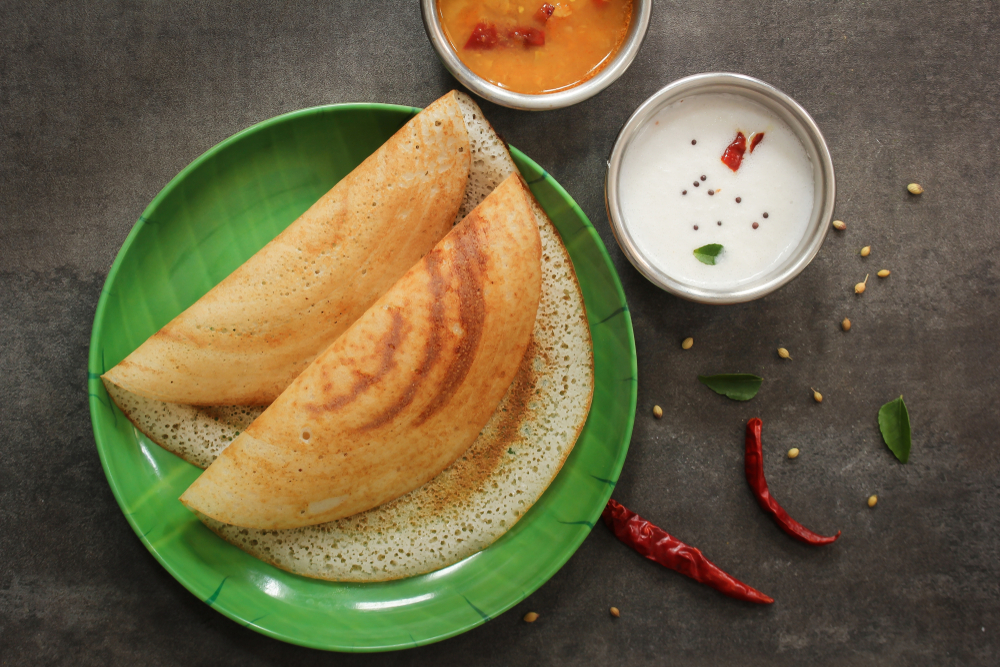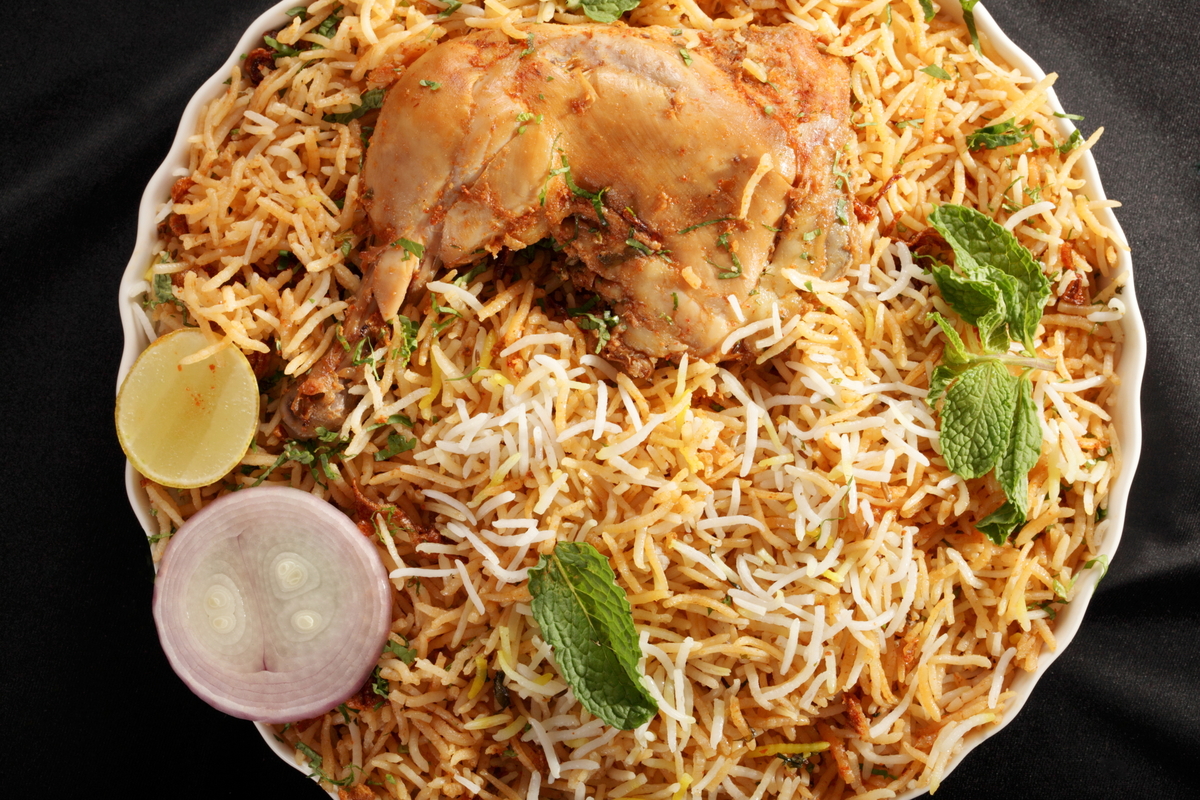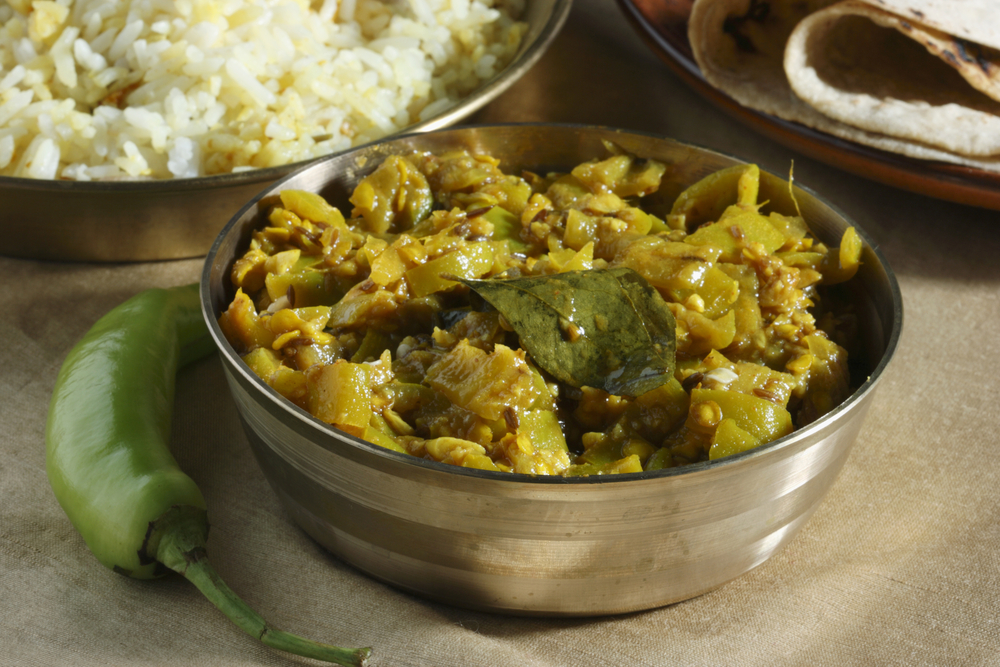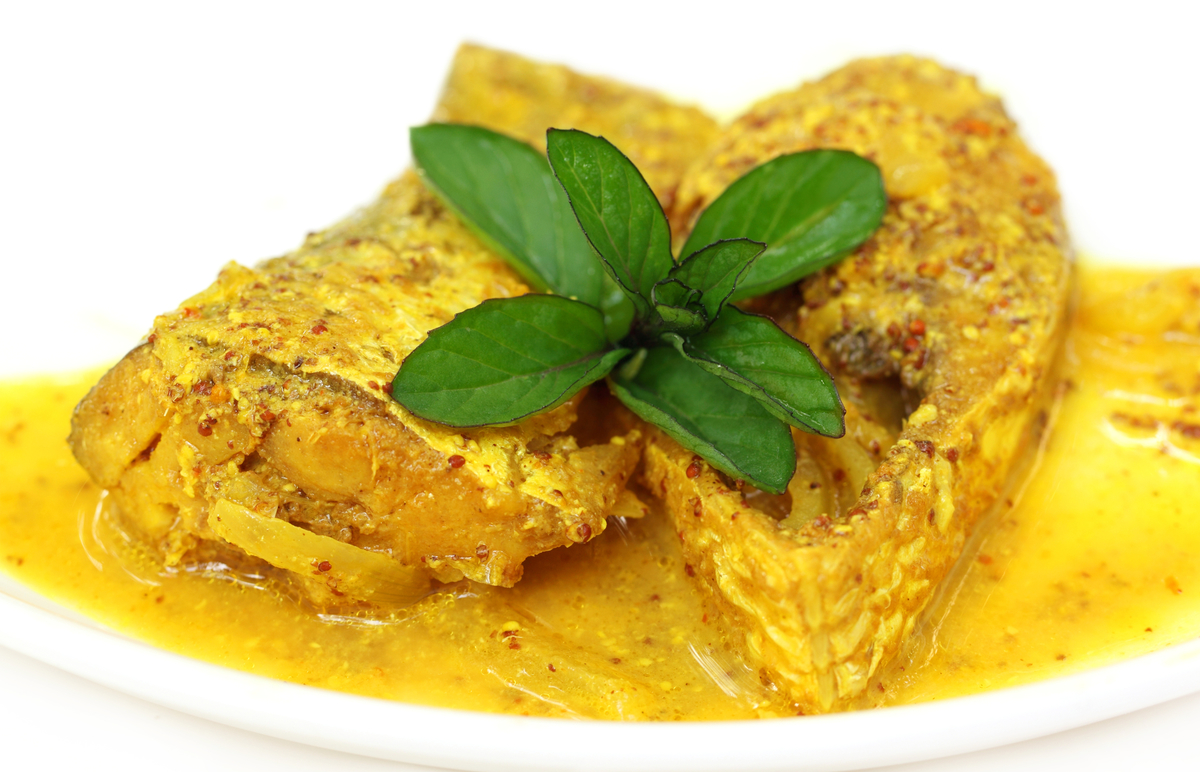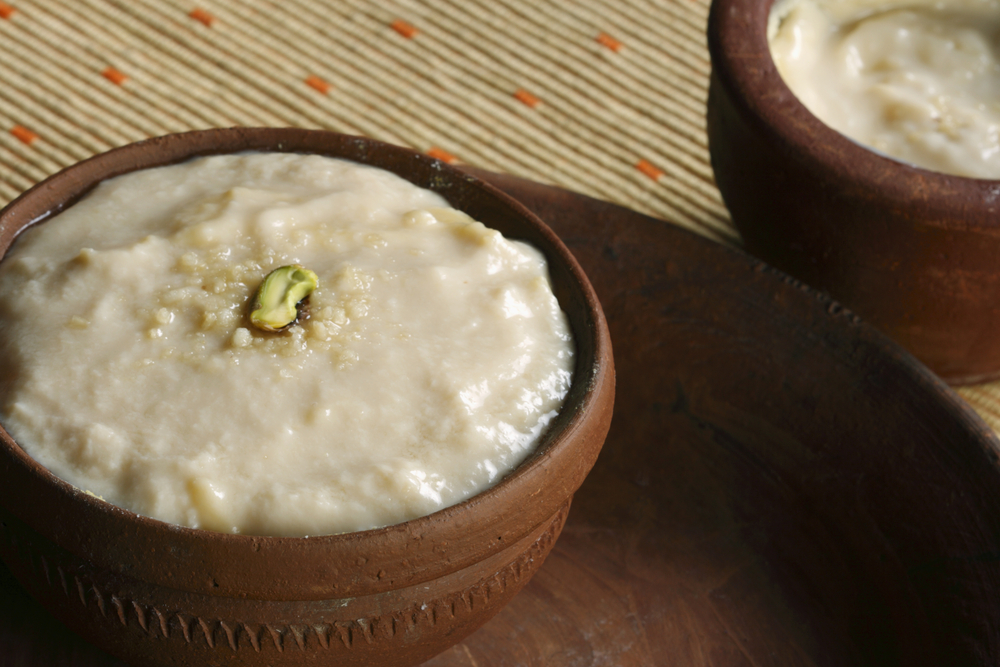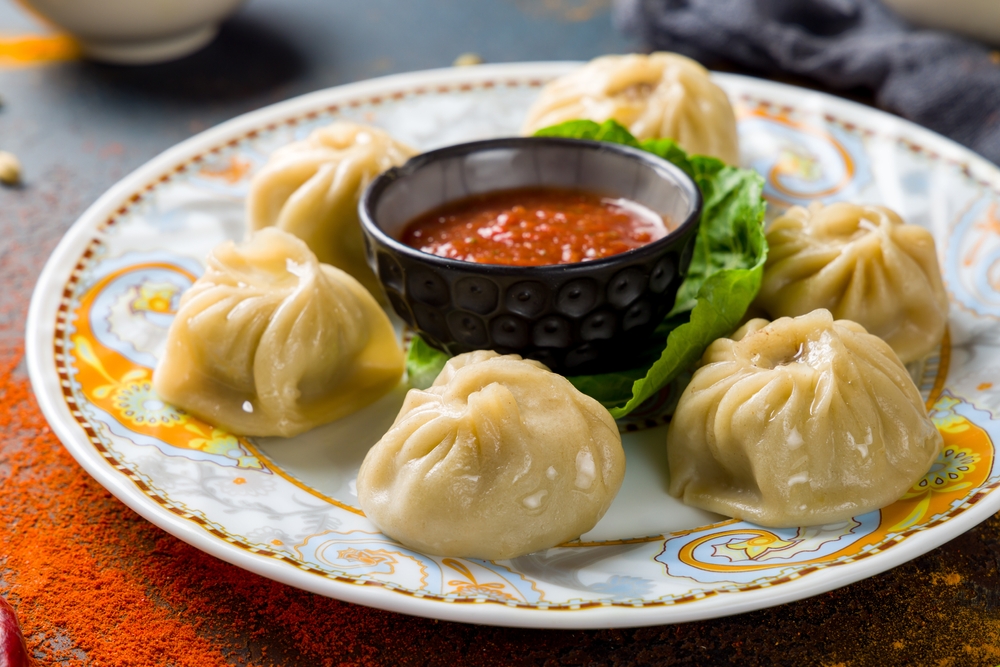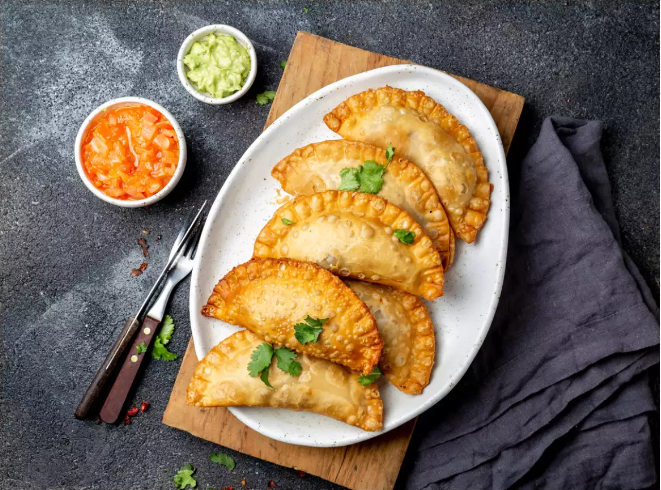Food and Drink: Regional Cuisine
As one of the world’s oldest civilizations and longest continuously settled regions, India is perhaps the most diverse country in the world: a veritable melting pot of cultures, languages, ethnicities, religions, and, of course, cuisines. The subcontinent is home to everything from sweeping mountain passes in the north, to fertile plateaus in the center, tropical coasts in the south, desert in the west, and coastal plains in the east. This geographic diversity also contributes to the wide range of ingredients and cooking styles used in local cuisines.
Vegetarianism and Meat
Domestication of plants and animals has been practiced in the Indus region since around 9000 BCE, making it one of the first regions in the world to experience settled agriculture, with legumes, grains, vegetables, and fruits composing the foundation of the Indian diet. Culturally, vegetarianism has been strong in India since the mid-first millennium CE: parallel to ancient Hinduism, the Śramaṇa movement, from which Buddhism and Jainism arose, advocated a vegetarian diet. Cows are considered sacred in the Hindu religion and pork is forbidden in Islam, making other meats such as lamb, poultry, and fish more prominent.
Global Influences
Since antiquity, India has come into contact with neighboring and foreign cultures through invasion and trade and has played a key role in the global spice trade since 3000 BCE. During the medieval period, northern India was invaded by the Turco-Mongol Mughals, which led to a fusion cuisine known as Mughali, which combines Indian and Central Asian influences such as kebabs, kofta meatballs, and saffron. Portuguese explorer Vasco de Gama rounded the Cape of Good Hope in Africa to reach western India in the late 15th century, establishing a vast and powerful trading network. The Portuguese introduced New World ingredients such as the potato, tomato, and chili pepper, which transformed Indian cooking throughout the country. India was under British colonial control from the early 17th to the mid-20th centuries, and British colonists introduced soups, uncooked salads, beer, whisky, and gin to the Indian palate.
Curry
Indian cooking has become synonymous with curry. However, while curry is referred to in the singular, it too comes in a wide variety of combinations. The term, an anglicized version of the Tamil word kari, belies the complexity and diversity of this bedrock of Indian cuisine. The permutations of dried spices with fresh herbs and chilies is nearly endless, though most curries include a base of coriander, turmeric, and cumin, with additional spices and herbs added that reflect regional tastes and ingredients. Curry is used to flavor sauces for meat or vegetable dishes, which are served “dry” (coating the ingredients with very little liquid) or “wet” (suspended in a sauce of yogurt, coconut milk, or ghee).
Broad Regional Trends
In India, as in many countries, there is a rough divide between northern and southern cuisines, with dozens of regional, sub-regional, and city-specific variations in between. Northern cuisine is characterized by a preference for baked wheat flatbreads such as naan and roti, rich sauces, flavorful dry rubs, and sour flavors, while the cuisine of the south tends toward soupy lentil and vegetable curries served with rice. This distinction, however, does not even begin to scratch the surface of India’s culinary diversity.
Indian Cuisine Abroad
Due to historic immigration patterns, much of the Indian food served throughout the West is inflected with the northern idiom: naan, samosas, dry curries, and grilled meat dishes. The large global Indian diaspora has popularized Indian cuisine throughout the world, particularly in Great Britain and the United States.
Jammu and Kashmir
Situated at the base of the Himalayas, the Kashmir Valley is a picturesque and fertile region framed by rugged mountains that historically helped to keep out invading forces. After the Turco-Mongol Mughals invaded in the 14th century, the long rule of Kashmiri Hindus, and to a lesser extent Buddhists, ended. The Mughals influenced the local cuisine with Persian-inflected ingredients such as dried fruits, thick yogurt-based sauces, saffron, and tea. Rice grows well in the region and is the staple grain, though bread is also consumed. Perhaps more than any other region in India, Kashmiri cuisine is marked by a love of meat, particularly mutton, a halal meat introduced by Muslim Mughal rulers. Kashmir is also home to an elaborate 36-course feast called a wazwan, a spread of meat dishes served with rice, salads, pickles, and dips. This feast is an important part of Kashmiri Muslim identity and is often served at weddings.
Rogan josh. One of Kashmir’s signature dishes, this Mughal-style recipe combines braised lamb in a fragrant sauce made of onions, yogurt, garlic, ginger, and aromatic spices. It has a rich red color from deseeded chili, giving it a mild heat.
Gustaba. Persian in origin, gustaba is mutton meatballs, spiced and cooked in a delicate yogurt gravy. This is one of the recipes included in a full wazwan feast.
Dum Aloo. Potatoes are first deep-fried, then slow-cooked, in a gravy of tomato and spices. This dish is served with rice.
Noon chai. As in Central Asia and the Himalayas, Kashmiris drink a salty tea made with black tea leaves, salt, milk, and sodium bicarbonate, giving the beverage a pinkish color. It is typically consumed at breakfast with bread, and socially during the day.
Kahwah. Kashmiris are heavy tea drinkers, but kahwah—green tea brewed with saffron, walnuts, spices, and almonds—is reserved for special occasions.
Punjab
Marked by its buttery flavors, creamy textures, and tandoori baking style, Punjab cuisine is one of India’s most iconic. Tandoori-style ovens became popular throughout India after Partition, as Punjab refugees resettled elsewhere in the country. Basmati rice originally comes from the rich agricultural Punjab region, and it remains the staple grain consumed, though wheat, corn, and millet are also popular. Punjab has one of the highest rates of dairy consumption in India, and clarified butter and paneer are featured prominently in many Punjab dishes. Typical spices include black pepper, cumin, coriander, and dried methi leaves of the fenugreek plant. Mutton and poultry are the most common meats, along with freshwater fish.
Chicken tikka. Cooked in a clay oven called a tandoor, chicken tikka is made of boneless chicken marinated in yogurt and spices, then baked—tandoori style. Chicken tikka has become perhaps the most visible example of Indian cuisine abroad.
Dal Makhani. Punjabi comfort food comes in the form of wholesome black lentils and red kidney beans simmered in a rich butter sauce of onions and aromatic spices.
Chole bhature. This spicy chickpea curry (chole), served with fried leavened flatbread (bhature), is a Punjabi street food now popular throughout India and the world. The crispy, puffy bread helps take the edge off the spiciness of the vegetarian curry.
Sarson da saag. This humble yet extremely popular dish of mustard greens is topped with ghee and served with unleavened cornbread. It is typically consumed in winter, when mustard greens flourish.
Panjiri. Both served as a dessert and eaten as a nutritional supplement, particularly for pregnant women and young children, panjiri is a Punjabi porridge made of whole-wheat flour fried in ghee and flavored with sugar and dried fruits.
Uttar Pradesh
Home to 200 million people, the large northern state of Uttar Pradesh is the most populous state in India, and was a seat of power in both ancient and medieval times. Two prominent sub-cuisines are Mughlai, the Persian-influenced cuisine from the Mughal empire also featured in Kashmiri and Punjabi cuisine, and Awadhi, from the state capital of Lucknow. Awadhi cuisine is noted for its kebobs and biryani, as well as dum pukht, a style of slow cooking meat or vegetable stews in a heavy-bottomed pot over a very low flame. Sometimes, bread dough is spread over the lid of the pot to seal in and absorb the aromas of the curry or dal. Wheat is the staple in Uttar Pradesh, and breads are usually unleavened. With the region's large Hindu majority, a strong vegetarian influence prevails in the local cuisine. A typical vegetarian meal is a platter of roti with rice, dal, a curry dish, and papadum (a crunchy wafer).
Kachori. Now popular throughout India, kachori is a local street food similar to a samosa but flattened and stuffed with dal and spicy chili powder.
Nihari. This slow-cooked beef or lamb stew with bone marrow is a traditional Muslim dish that combines both the Mughal spice palate and the dum pukht slow-cooking style. The traditional recipe is cooked for 6–8 hours, resulting in extremely tender meat. It is seasoned with long pepper, which gives it a distinct flavor.
Bedmi puri. This popular street food is a hearty dish of wheat bread stuffed with spicy lentils, served with a side of spicy potato curry in a thin tomato sauce. Bedmi puri is a popular breakfast dish.
Rajasthan
Much of this large state in northwestern India is covered by the Thar desert, making fresh vegetables and fruits less prominent in Rajasthani cuisine than in other regions of India. For centuries, Rajasthan was a disputed territory and the playground of emperors. Portable, non-perishable recipes were developed for warriors—and traders—to carry with them across vast desert distances. Due to the historic scarcity of water, food is generally cooked in milk or ghee. Lentils, gram flour, and chili are staple ingredients, and sweet and savory dishes are often served together.
More than 70 percent of the population is vegetarian, making Rajasthan the most vegetarian state in India. The Marwari, a local ethnic group long involved in caravan trade, helped popularize full vegetarian restaurants called Marwari Bhojnalaya throughout the country, which are independently owned and operated and serve simple vegetarian fare.
Dal Bati Churma. Rajastan’s signature meal is a carbohydrate-heavy platter of three dishes: bati, a wheat bread; dal, a spiced legume stew cooked in ghee; and churma, deep-fried balls of dough crushed and sprinkled with sugar.
Gatte ki Sabzi. The base ingredient of this dish is gram-flour dumplings, formed into balls, and cooked in a spicy onion and yogurt curry.
Ker Sangri. Utilizing two local ingredients that grow well in the arid climate—the ker berry and the sangria bean—this vegetarian side dish is both savory and sweet, thanks to the use of chili, cardamom, and raisins.
Dil Khushal. The local staple, gram flour, is cooked with ghee and butter and then pressed into squares. At room temperature, the dough partially solidifies, resulting in a sweet and moist dessert.
Gujarat
Called the “Jewel of western India,” Gujarat is a large western state bordering the Arabian Sea. It was one of the centers of the ancient Indus civilization and has been active in seafaring and trade with the West since ancient times. Gujarati dishes are noted for simultaneously combining sweet, salty, and spicy flavors. The cuisine is largely vegetarian, due in part to the influence of the Jain community, a prominent religious and ethnic minority. Due to its vegetarian bent and restrained use of oils, Gujarati cuisine is considered to be one of the healthiest in India, with a typical meal including legumes and rice served with steamed and spiced vegetables, pickles, and chaas, a yogurt-based drink.
Undhiyu. This mixed vegetable dish consists of seasonal vegetables such as green beans, eggplant, unripe banana, potatoes, and yam. The name means “upside down,” as it was traditionally prepared in buried earthenware pots heated from above.
Handvo. A vegetable cake made with a blend of wheat flour, lentils, bottle gourd, and sesame seeds is fried and served at room temperature.
Khandvi. This all-purpose snack food is made of gram flour dough with yogurt and green chili paste, pan-fried into thin pancakes and rolled into a pinwheel shape. Khandvi are garnished with mustard seeds, coriander, and coconut.
Khaman. This cake-like dessert is made with steamed gram-flour dough and garnished with savory spices such as chili pepper, salt, and chopped ginger or sugar. This common snack food is similar to dhokla, a fermented batter of ground rice and chickpeas made into steamed cakes.
Maharashtra
India’s second-most populous state and third largest by area, Maharashtra is a diverse state centered around the teeming metropolis of Mumbai. As the wealthiest state in India with many large urban centers, it also attracts residents from around the country, giving Maharashtrian cuisine a distinct cosmopolitan character. The city's fast-paced lifestyle and urban population make street food ubiquitous and popular. Much of the cuisine is vegetarian due to the influence of the Hindu majority and small but prominent Jain community. Rice and flatbreads made from wheat and millet are staples, along with legumes and vegetables such as cabbage, okra, greens, and gourds. Chicken, goat, and fish are the main meats for non-vegetarians.
Pohay. This classic Maharashtrian dish of flattened rice with roasted chilies, onions, curry leaves, mustard seeds, and cumin is typically offered to guests with a cup of tea.
Vala pav. A simple potato patty served in a sweet Portuguese-style bread roll with fresh coriander and spices, this deep-fried snack is a popular vegetarian burger that originated in Mumbai’s street-food scene.
Raga pattice. Mumbai’s street-food vendors and fast-food restaurants serve this popular and simple spicy stew of dried peas with fried potato patties.
Modak. These sweet steamed dumplings stuffed with coconut and jaggery (cane sugar) are said to be a favorite of the elephant-headed god Ganesh, and are eaten on Hindu holidays.
Shrikhand. A classic Maharashtrian dessert, shrikhand is made with strained yogurt and sugar. It is served topped with crushed almonds, cardamom, and saffron.
Goa
Goa is the smallest state in India, located on the West Coast along the Arabian Sea between Maharashtra to the north and Karnataka to the south. With the region’s Hindu origin, the era of medieval Muslim rule, and a 400-year period of Portuguese colonization, Goan cuisine is a melting pot of cultural and religious influences. The Portuguese introduced New World ingredients such as potatoes, tomatoes, and chili pepper as well as pineapples and guavas, to this important stop on the global spice route.
Given the region's coastal location, fresh fish and seafood play a prominent role, and rice with fish curry is a staple meal. Goan curries are characterized by their use of coconut milk and fiery chili pepper, but the cuisine tends to be comparatively light due to its use of fresh fish over meat, rice over bread, and coconut oil over ghee.
The warm, tropical climate makes Goa a fertile agricultural region, with rice, coconuts, and cashews the leading cultivated crops. The majority of the population is Hindu, making vegetarian and pescatarian cuisine an important aspect of Goan food; however, around a quarter are Christian, making Goa perhaps the only place in India where pork is consumed with regularity. Traditional foods eaten by Goan Catholics are strongly influenced by Portuguese cooking and ingredients.
Vindaloo. Based on the Portuguese carne de vinha d'alhos (meat marinated in wine and garlic), pork vindaloo is a Portuguese-inspired dish famous in Goa. The Goan version uses palm vinegar instead of red wine and adds plenty of fragrant spices and chili pepper. This dish nearly always appears on the menu at Indian restaurants outside of India.
Patoleo. A turmeric leaf cake is stuffed with rice, grated coconut, and jaggery.
Sanna. These spongy rice cakes are served with meat curries, or eaten for breakfast with coconut chutney.
Kuswar. The Catholic community of Goa celebrates Christmas with a platter of 22 sweet confections collectively called kuswar, which fuses Portuguese dessert and cookie recipes with Indian ingredients.
Bebinca. A seven-layer pudding of ghee, egg yolks, flour, coconut milk, and sugar, this Portuguese-influenced recipe is Goa’s signature dessert.
Kerala
Kerala is a coastal state in southwest India referred to as the “Land of Spices” for its pivotal role in the spice trade with Europe and the Middle East, dating from 3000 BCE onwards. The Portuguese colonized the area in the 15th century, and to this day, its tropical agricultural lands produce cash crops such as spices, pepper, coffee, rubber, tea, and cashews. As a majority Hindu state, much of the local cuisine is pescatarian. Fish curry with a dash of coconut is ubiquitous, though sizeable Muslim and Christian minorities have contributed many meat and poultry dishes to the regional palate. Coconut is a prominent ingredient in the local cuisine, used for both flavoring and thickening. Rice is the staple grain, but cassava is also common.
An important local Hindu culinary tradition is the Sadhya, a banquet of plain rice served with about 25 different accompaniments, including curries, legumes, chutneys, yogurt dips, and desserts. Traditionally, dishes are served on a banana leaf, with diners seated on the floor eating with their hands.
Theeyal. This typical vegetarian curry is a blend of roasted coconut with spices and tamarind water, served with rice.
Avial. A thick mixture of mixed vegetables and coconut flavored with curry leaves is an essential part of the Sadhya feast.
Olan. This bean and white gourd curry is seasoned with coconut milk and ginger, and is cooked in coconut oil—characteristic Keralan flavors.
Puttu. A cylinder of coarsely ground steamed white rice and shredded coconut is served with both savory and sweet accompaniments for breakfast.
Tamil Nadu
Tamil Nadu occupies the southeastern tip of the subcontinent, and is home to the Tamil people, a distinct ethnic group with Hindu, Muslim, and Christian adherents. Accordingly, Tamil cuisine has strong vegetarian and non-vegetarian veins. Like much of southern Indian cuisine, the main ingredients include rice, lentils, legumes, vegetables, and dairy products. Tamarind is a characteristic flavor, and because Tamil food tends to be quite spicy, meals are often served with yogurt to balance out the chili.
A typical meal is based on steamed rice served with several accompaniments, including a lentil stew, sautéed vegetable dish, tamarind soup, vegetable and lentil curry, and curd, a curdled dairy product. Breakfast and dinner are lighter snacks, with lunch being the main meal of the day. Traditionally, daily meals were plated on banana leaves and eaten by hand, though this custom is now largely reserved for celebrations. The word curry actually comes from the Tamil kari, which means “sauce” or “relish,” and the word rice probably also comes from the Tamil arisi, as the Tamil are believed to have been among the first to cultivate the staple crop.
Parotta. Originally introduced to Tamil Nadu by Sri Lankan harbor workers, parotta is a flatbread made of finely milled white flour that is rolled flat and roasted. Parotta are typically served with meat or vegetable curries.
Dosa. A pancake of fermented rice and gram flour batter, this common breakfast dish is stuffed with potato or lentil, or served with chutney.
Chicken Chettinad. This is a classic poultry dish from the region of Chettinad in Tamil: chicken marinated in yogurt and an aromatic spice paste, topped with fresh coriander and a dash of cream.
Rasam. This soup has a tangy tamarind base, complemented by tomato, chili pepper, cumin, and other spices. It is eaten with rice or alone as a spicy first course.
Telangana
Controlled by Nizam-ul-Mulk, an independent monarch originally descended from Mughal rulers, Telangana is centered in the royal capital of Hyderabad, a thriving center of political power and Islamic culture since the 17th century. This regional cuisine is defined by both Telugu and Hyderabadi cuisines. The ethnic Telegu are largely Hindu, with Muslim and Christian minorities, making Telugu cuisine largely vegetarian. Unique ingredients and flavors include broken rice, sorghum, and peanuts. Hyderabadi cuisine, in the tradition of the city’s large minority Muslim population, is largely non-vegetarian and is a fusion of Mughal, Arabic, and Turkish influences. What distinguishes Hyderabadi from northern Mughal cuisine is the use of dried coconut, tamarind, and flaming hot chili pepper—typical flavors of southern Indian cuisine. Telangana’s cuisine is considered one of the spiciest in India and is marked by sour and tangy flavors from extensive use of lime and tamarind.
Hyderabadi biryani. The best-known recipe for biryani, a mixed rice dish, comes from Hyderabad, where it is cooked with goat, lamb, or chicken, along with yogurt, onion, and saffron.
Mirchi ka salan. The base of this slow-cooked spicy curry is green chili peppers, flavored with peanuts, sesame seeds, garlic, and more chili pepper. It is often served with biryani.
Sakinalu. A popular snack made of rice flour, sakinalu is shaped into a conical form and deep-fried. It is garnished with sesame and ajwain seeds, and it is eaten during festivals and celebrations.
West Bengal
With its capital at Kolkata, West Bengal is a culturally prominent state that has been a center of power for centuries. Its cuisine was influenced first by Turkish Mughal rulers during the medieval period, and Kolkata was the capital of the British Raj from the mid-18th to mid-20th centuries. Contact with foreign traders, such as the Chinese, also brought new flavors, including a taste for pork and duck. The British and Jews introduced baking, and West Bengal developed a reputation for making the best desserts and confections in India.
Unlike most other states in India, most Hindus in West Bengal eat meat, including fish, mutton, pork, poultry, and even beef (for Muslims and other non-Hindus). Rice is the staple grain, and dairy is also an important ingredient, particularly in West Bengal’s famous desserts. Like other eastern cuisines, West Bengali food tends to be less spicy and more subtly flavored than other Indian cuisines.
Bhapa Ilish. This curry of steamed fish is served in a mustard yogurt sauce.
Mishti doi. A fermented yogurt dessert sweetened with sugar and cardamom is eaten on Hindu holidays.
Rasgulla. Ball-shaped sweet dumplings of cottage cheese coated in semolina breading are deep-fried and doused in syrup.
Sikkim
Sikkim is a remote mountainous region inhabited by several distinct ethnic groups, including the Nepalese, Bhutias, and the Lepchas, each with their own cooking styles. Owing to the elevation, the regional cuisine tends to be hearty, and heavy on meat and dairy. Rice is the staple, but other grains are also consumed, especially at higher elevations, including potatoes, millet, barley, and buckwheat.
Momo. These wheat flour dumplings stuffed with meat and vegetables are similar to Nepalese and Tibetan dumplings.
Shabhaley. Large crescent-shaped, deep-fried pies are stuffed with beef and cabbage.
Article written for World Trade Press by Carly K. Ottenbreit.
Copyright © 1993—2025 World Trade Press. All rights reserved.

 India
India 